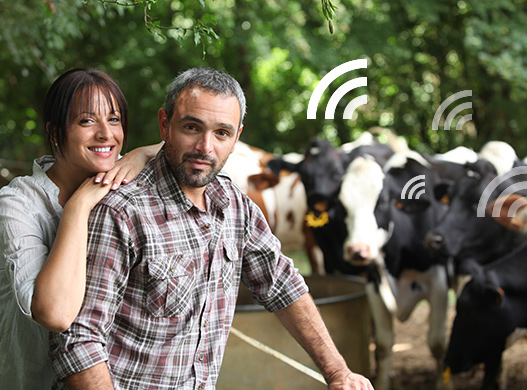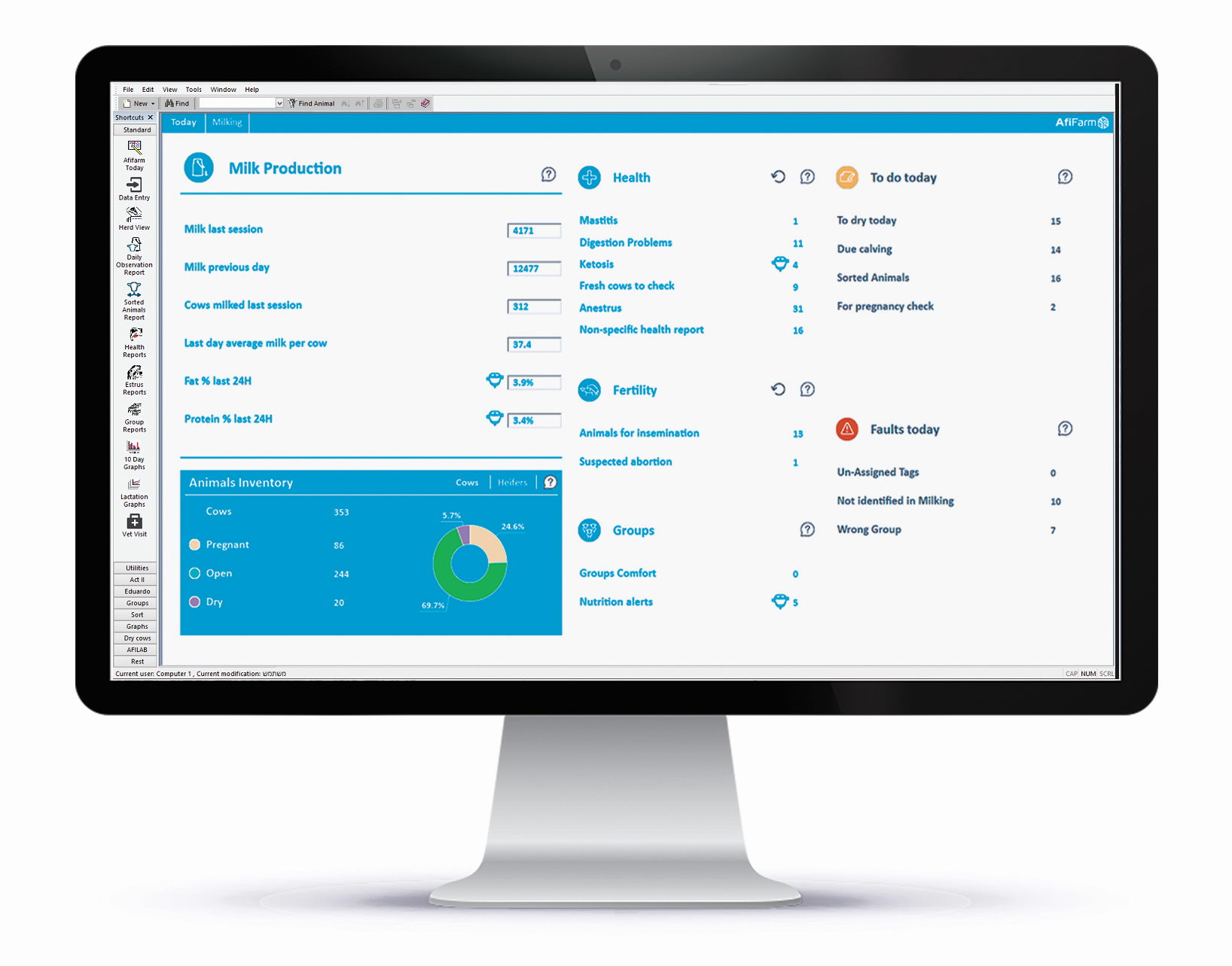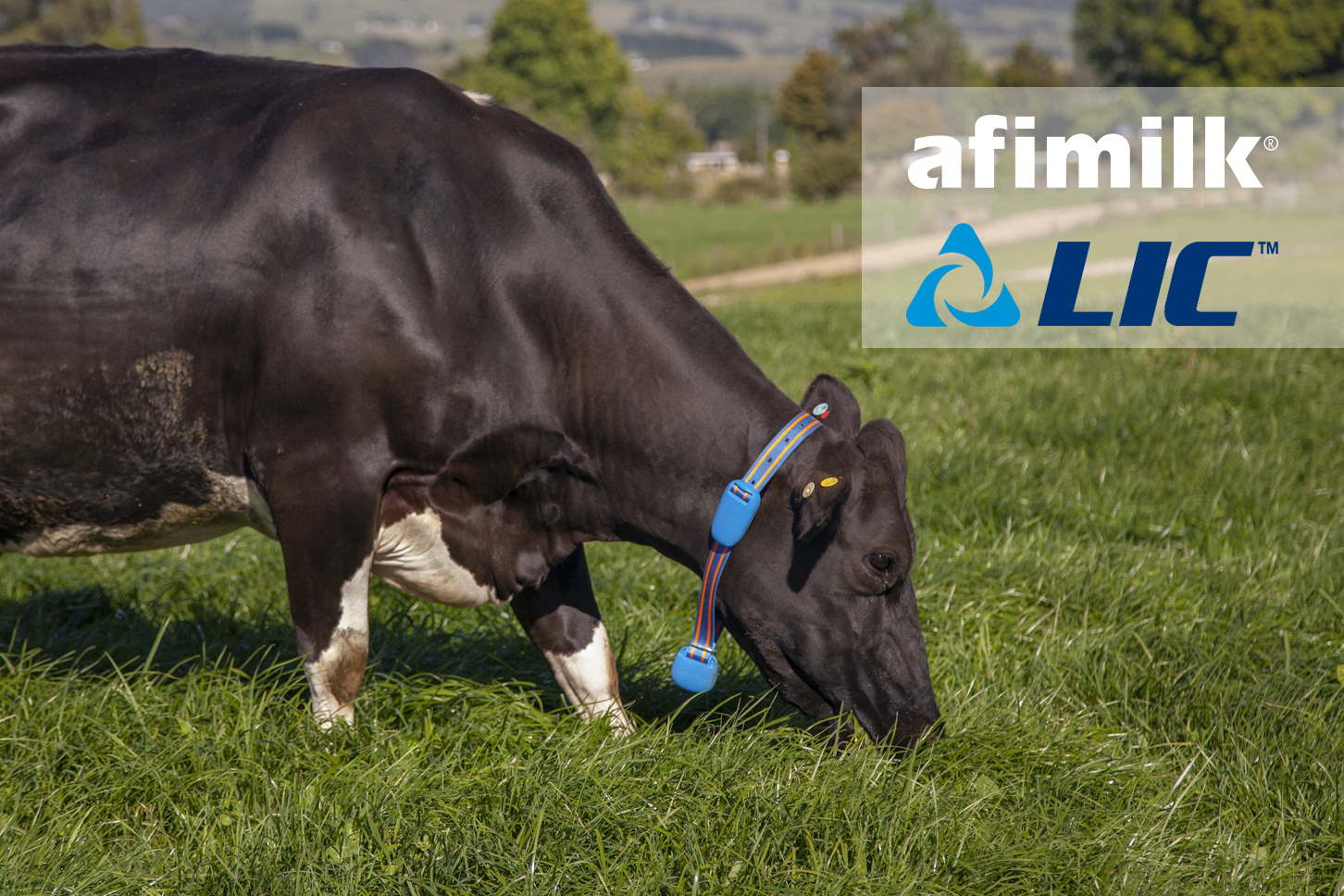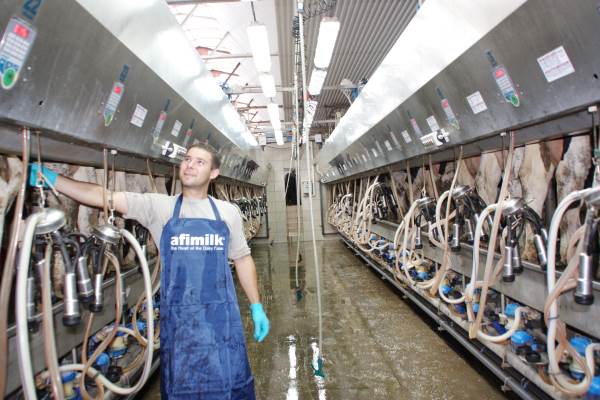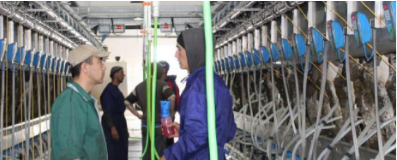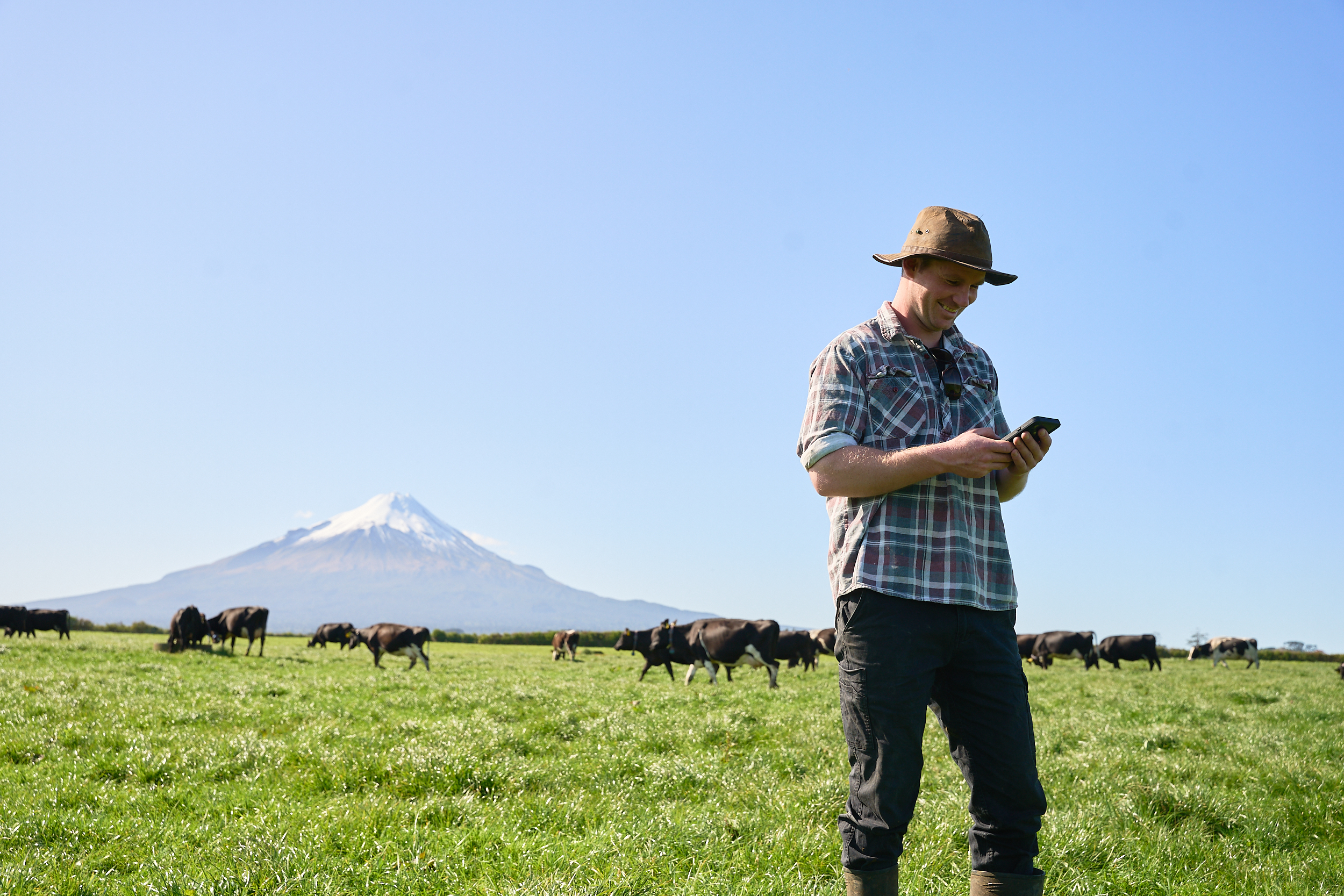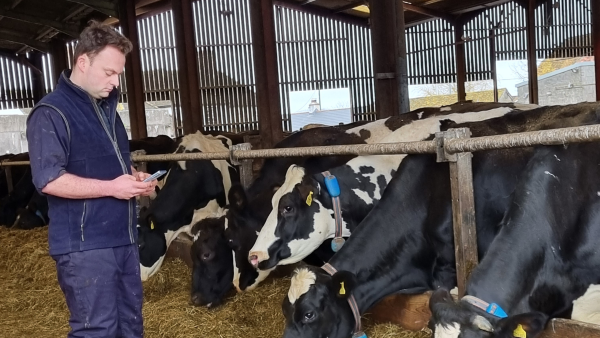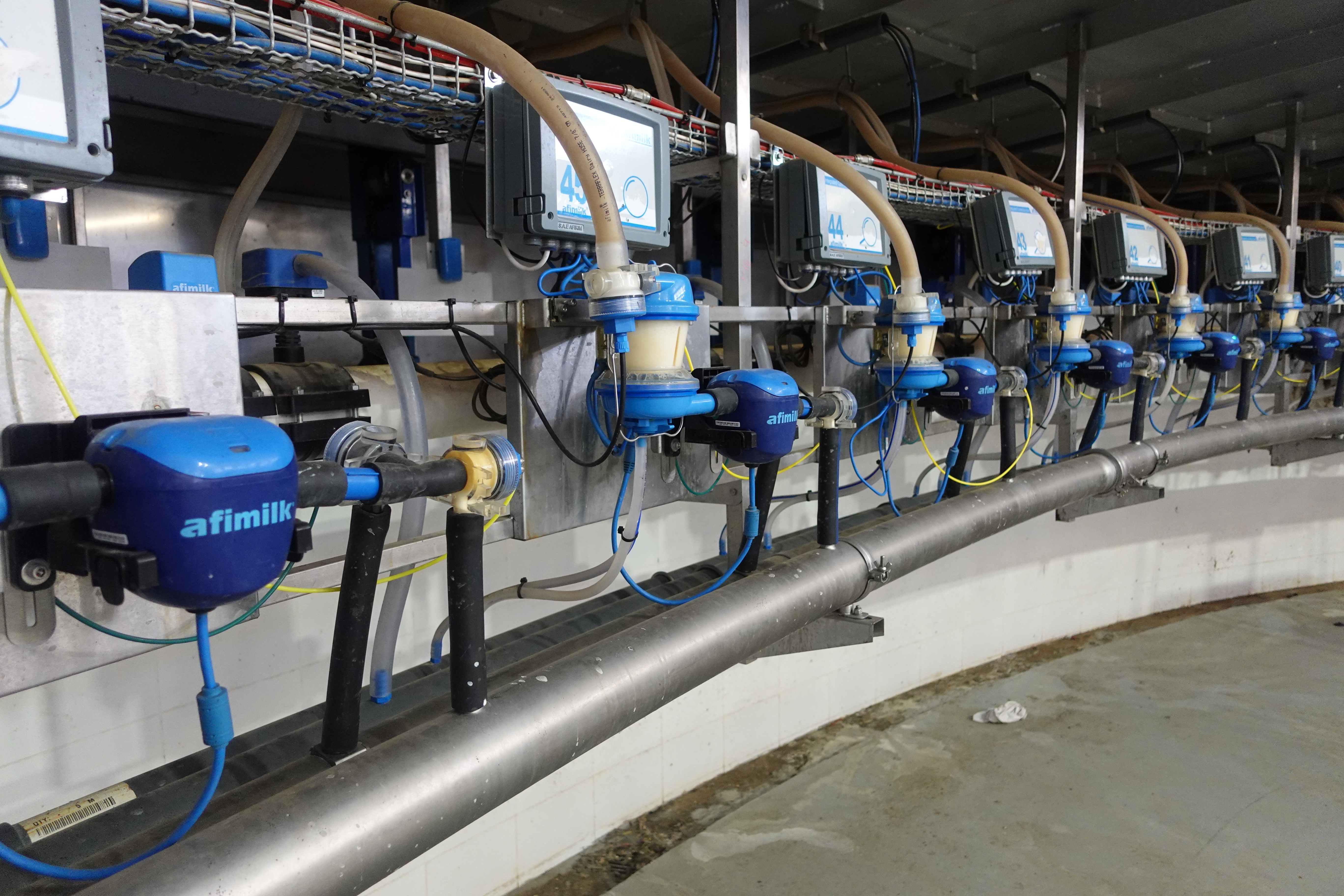The Changing Lifestyle of the Dairy Farmer
Farmers have long been appreciated for the sacrifices they make to ensure our supermarkets are stocked with an abundance of produce. That said, the traditional image of the dairy-farmer rising before dawn to milk the cows while his dedicated wife hand-rears the calves and the kids rake out the cowsheds seems far-fetched today. Traditional farms operated under an all hands on deck model where the farmer and often the family too, had to work around the clock with barely a break and never a holiday (what’s that?). The life of the modern farmer is dramatically different. Sweeping technological changes across the agricultural industry mean that jobs that were once performed manually are now automated – and we’re not just talking milking machines replacing the maid and her bucket!
A new breed of technologies, known collectively as “agriculture 4.0,” is creating interconnected farms where farmers can see what’s going on anywhere, anytime, by simply glancing at a screen. Sensors placed strategically on farming equipment, and even on livestock, continuously gather data and effectively act as the eyes and ears of the farm, simplifying or eliminating many of the jobs the farmers once did themselves. All this progress sounds impressive on paper, but does it ultimately make life better for farmers, and is learning how to use technology more hassle than it’s worth?
If It Ain't broke... Don't Fix It!
While people from many industries believe that technology has the power to make everything more accurate, efficient, and profitable, it is often eyed with fear and suspicion by farmers for whom the old saying, “if it ain’t broke, don’t fix it!” rings true. Having successfully used traditional farming methods for decades, farmers rightfully fear that technology will unnecessarily complicate their lives and result in a loss of control over their farms. They also fear the learning curve, imagining that it will be difficult and time-consuming to master complicated new computers. The opposite is actually true. These days, even the most diehard traditionalists know how to use a mobile phone and most of these technologies are no harder to master than that!
In farms across the globe, technology is giving farmers both greater mastery over their farms and greater freedom. Data-driven systems incorporating automated alerts give farmers the information they need to run their farms efficiently without being tied to the farm 24/7. Farmers are taking to these user-friendly technologies with surprising ease and much excitement finding that they have more time to think ahead, plan, enjoy life, and spend time with the family. Farming technology is an exciting field that is developing rapidly and those who embrace it are reaping the rewards of more efficiency, greater profits, and a better work-life balance than ever seen before in farming history.
Let’s take a look at why this is so.
Married To The Farm
In the good (or not so good) old days, people would say that a farmer was married to his farm. Farming was understood to be a full-time commitment and a farmer could never be far away from his farm for long. Given the lack of technology, farmers had to rely mostly on sight, sound, and touch to determine when animals were sick, in heat, or needed special attention. Everything had to be hand-recorded and a farmer always carried a pencil and notepad to note down which cows needed what interventions.
Aside from the farmer having very little freedom, there were other problems with the old ways. The farmer held everything in his head and if new workers joined the farm, or when it was time to pass the farm onto the next generation, he alone could transmit the knowledge. If something happened to the farmer, a treasure-trove of amassed wisdom would be lost. Data written on scraps of paper was easily lost or misinterpreted. Trying to determine whether a cow is in heat from visual signs alone was a hit-and-miss process that led to many missed opportunities.
Traditional farms worked well enough in former times but they are no longer sustainable. With an expected 9 billion people to feed in the world in the near future, it’s a job that’s become too big for the traditional farmer (and his wife). Now is the time to explore how technology can make life better for farmers, and as a result, for the rest of us.
Technology Brings Freedom To Live, Grow, and Profit
Far from being a complicating factor, technology is making it possible to run farms as effectively as ever – often more so – while giving farmers more time for other activities like spending time with family, enjoying the odd break, or strategizing and planning for the future. For all the most critical jobs that take place on dairy farms, technology brings ease, accuracy, and more freedom for farmers without any compromise on profitability:
Find Optimum Insemination Window Without Watching Cows All Day
The opportune time to inseminate a cow is a small window of maybe 5-6 hours. Missing this vital time costs farms dearly in terms of wasted sperm, failed pregnancies, and having to wait until the next cycle to have another go. In the traditional farming model, trying to catch the “right” time for insemination meant being in the field several hours a day looking out for cows mounting other cows, manually checking for vaginal mucous, and examining animals for swelling or reddening of the vulva.
The “chalking” method is a quick way of checking if a cow has been mounted by another cow and has the advantage of allowing the farmer to leave the barn for a while but it is inaccurate. “Rubbed off” cows still need to be observed for secondary signs to determine if they really are in heat. Cows might be in heat at night when the farmer is not around and between 10 to 12% of cows never show outwards signs of heat at all, making the job even harder.
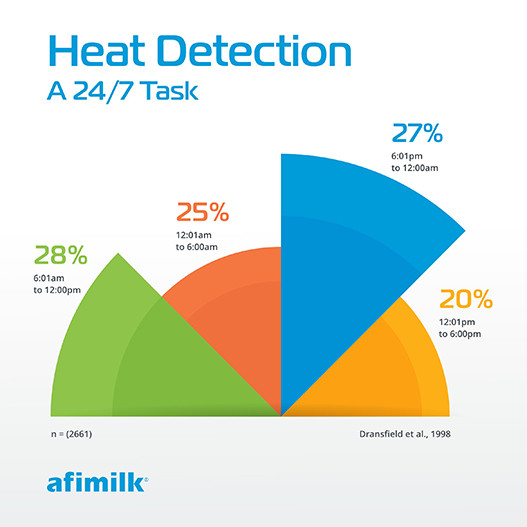
With the new breed of farming technologies, farmers can know exactly which animals are in heat without relying on any visual signs. They also know the best timing for insemination down to the hour, maximizing the chances of a pregnancy. Because this information is based on data from sensors worn by the cow (on a collar or leg tag) it is far more accurate than relying on the farmer’s senses. Accurate data improves conception rates and boosts profitability while alleviating pressure on farmers and staff who no longer have to be physically present at all hours but can simply be alerted when the time is right.
Calving Alerts Give You More Downtime
Knowing when a cow is about to calve can make the difference between life and death for the cow and its offspring. In the old days, this meant having someone on the ground close to the pregnant cows at all times – an intense and exhausting job. Modern farming technologies are life-changing for farmers in that they can provide a calving alert just before calving begins giving farmers the chance to be present for the delivery without having to hang around the pregnant cows all day. Special alerts can also be sent if a cow is having a difficulty that may require intervention. All this data can be conveniently transmitted to the farmer’s phone giving them more flexibility and control over their time.
Milking Technology Increases Efficiency and Reduces Costs
Milking is the heart of the dairy farm and the most time-consuming and labor-intensive job. A far cry from the old manual days, modern milking parlors look more like factories with all the machinery they house. Data collected through a milking analysis system makes milking routines more efficient resulting in reduced costs. Sensors that collect and store data provide information about milk yield, nutrient density, and cow welfare (to name just a few) that go way beyond what humans can discern with their senses alone. A change in milk yield or conductivity instantly flags up so the farmer can assess the underlying cause. In the case of mastitis, early detection allows farmers to treat cows promptly before the disease develops further. Some parlors offer automated sort / draft gates where cows are directed to the appropriate location depending on the action to be taken (insemination, treatment, vaccination!) While staff still need to be present, the physical labor is greatly reduced while accuracy and efficiency is enhanced.
Manage Your Farm Easily And Efficiently
While there are a variety of solutions on the market, the best ones can be used to monitor every aspect of life on the farm – from the track-record of each individual inseminator to the yield and health profile of each cow, to the management of sick cows, herding, sorting cattle and more. Any data a farmer is interested in can be viewed from a central dashboard allowing for better planning, effective strategizing, and more insight than ever. If new workers join the farm or another farmer takes over, the data that is the heart of the farm is stored and accessible for anyone to access. No one person is indispensable and workloads can be more easily divided and shared. Technology-driven farm management frees up time and resources and is a true game-changer for the industry as a whole and especially for the farmers themselves.
As with all progress, the initial onboarding requires a switch in behavior which can be uncomfortable at first. Learning new ways when old ones have served well for decades can feel like an unnecessary chore but in the case of farming technology, the lifestyle benefits combined with the vast improvements in efficiency and profitability, make this a development well worth embracing.
Afimilk management tools enhance automated processes and decrease the need for farm labor Start Today
